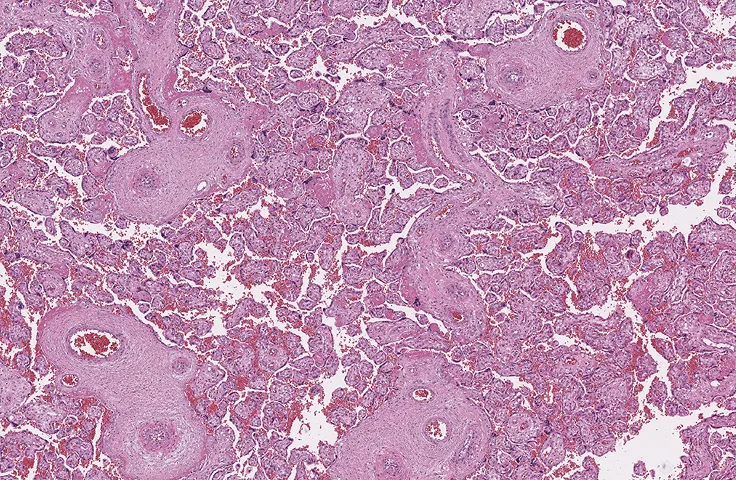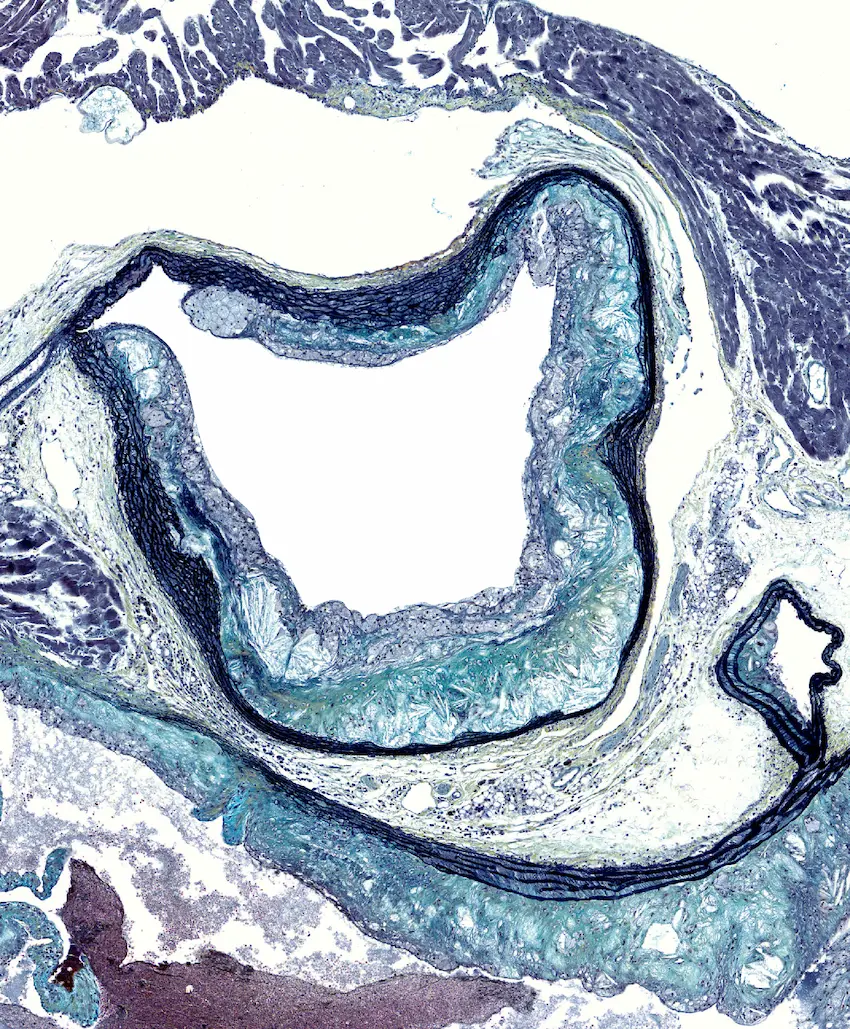Histology Services

We know how important your samples are and why we like to personally ensure they make it to our lab safely when possible. If you're in the Boston area, we'll arrange this as standard practice between our lab and yours.

Once safely at the lab, our team checks in every sample. From there, we follow established protocols to properly process your tissues into FFPE blocks. Please note that this is the best storage state for any tissue.

Our histotechnicians are proficient at sectioning both FFPE and OCT-embedded blocks. We can also generate slides from blocks you may have on-hand.
Every study to come through our lab starts with an H&E, so that our scientists and pathologists can assess your sample quality.

Stains Gallery
Have Materials? We accept:




Don't have materials, but have questions?
Let’s Chat!Hey, Boston!

Additional Services

Digital Pathology

Pathology

Consultations

Imaging
.avif)
Advanced Staining
FAQs
We cut routine sections at 4um. However, for some special stains we will cut them at 8um (ex/Toluidine Blue)
Under fixing tissue can result in autolysis and protein degradation. It may also cause staining artifacts. The size of your tissue samples and the amount of fixative used will greatly affect the amount of time needed for proper fixation.
• 10% neutral buffered formalin (preferred), use 1 part tissue to 15-20x amount of NBF or 4% paraformaldehyde (similar to 10% NBF)• 70% ethanol for cytology specimens (not recommended for central nervous system histology)
In general, we try to avoid keeping samples in formalin past 48 hours to prevent over-fixation. Over-fixation can mask epitopes and reduce antigenicity. If you are planning on doing IHC/ISH, then samples should be transferred into 70% ethanol or PBS at 4º C after fixation. However, we have successfully run studies on tissues that were stored long term in formalin. One exception is brain/CNS which should never be placed in ethanol as this tissue is sensitive and easily susceptible to drying out.
• Properly labeled containers with animal ID and study number. Animal ID needs to be properly labeled twice on the container if possible, in case one gets wiped off.• Be careful of collection artifact (ex/ crush artifact from forceps)• Gently stretch tissue as you lay it out (ex/ mouse GI, rat skin) to avoid scrunching up of tissue. Consider instead: Skin samples may be allowed to lightly adhere to a piece of cardstock with the subcutaneous side down before fixation to ensure good orientation for histology.• Place tissues in fixative as soon as possible to reduce autolytic effects.• Avoid letting the tissues dry out during necropsy.• We typically use Revised guides for organ sampling in rats and mice - Part 1 (nih.gov) or the website version Revised guides for organ sampling and trimming in rats and mice (fraunhofer.de) as a reference
To avoid the specimen defrosting during shipment please place all specimens on dry ice (blocks or pellets) and use an insulated box for shipping.
Yes. Morphologically, the tissue will be fine and there will be no issues if you are requesting H&E or special stains. If you are requesting IHC/ISH then over-fixation can mask epitopes and reduce antigenicity. It is best to consult with the advanced staining team to get the best results out of your tissue.
• Fix for a MINIMUM of 24 hours; aim for 48 hours as a standard• IHC/ISH – no more than 48 hours – must transfer to alcohol (70% ethanol)• Livers/spleen/dense tissue: 36-48 hours• Cells/cell pellets: 15 min-48 hoursNote: Samples need to be fixed in containers 15-20x volume of the specimen and NOT overcrowded in the container. If the specimen is biohazardous, contact us for fixation recommendations
Samples for cryo work can be sent as unfixed or fixed tissue frozen (by itself) or frozen (embedded in OCT). If you are submitting frozen samples already embedded, please do not use excess OCT as this may affect mounting of the samples. We cannot perform cryo work on paraffin processed samples.
Specimen jars/containers need to be secured to avoid spillage of fixative and specimen not drying out during shipping. You can wrap parafilm along the lid and/or place containers in a plastic bag. Put the entire thing in a padded box for protection. Please remember to send a sample list of your specimens in the box or via email.
After appropriate fixation, place specimens in Immunocal (a mild formic acid decalcifier) for 1-3 days depending on size. For samples destined for RNA work, we recommend instead an EDTA based decalcification solution (2-4 weeks on a shaker). In the end, your tissue should be rubbery and easy to bend.
Place slides in a slide box with folded paper towels or other thin packing material on top of the slides to prevent movement in the slide box during shipping. Tape around the slide box to ensure the box doesn’t open during shipping. Then place the slide box in a padded packaging box along with sample list of slides.
Yes, we accept blocks prepared at other locations. Once received, we will examine the tissue in the block and determine if the orientation of embedding is correct. If necessary, we will re-embed the samples.
No, Oil Red O can only be performed on cryosections. Oil Red O is a special stain that detects lipid content in tissues. The processing procedure used to create paraffin blocks will remove fats from the adipocytes. Oil Red O staining can be performed on formalin-fixed tissues as long as they have not undergone tissue processing or contacted ethanol or xylene solutions.
PSR/MT are acceptable for assessing collagen in heart, lung, liver, and kidney, though PSR is preferred. We recommend collagen IHC for GI and for any subtle changes expected.
After you will decide what features you want to see on the slide and appropriate trimming is done, generally, cut side down is how specimen tissue is embedded. We can assist you with your trimming/embedding to ensure we meet your research goals/needs.
We can accept samples in formalin, however, depending on the shipping carrier regulations you may need to transfer your samples into a different solution for transport. All types of tissues can be transferred to 70% ETOH or PBS for shipping EXCEPT for CNS samples.




.avif)
























